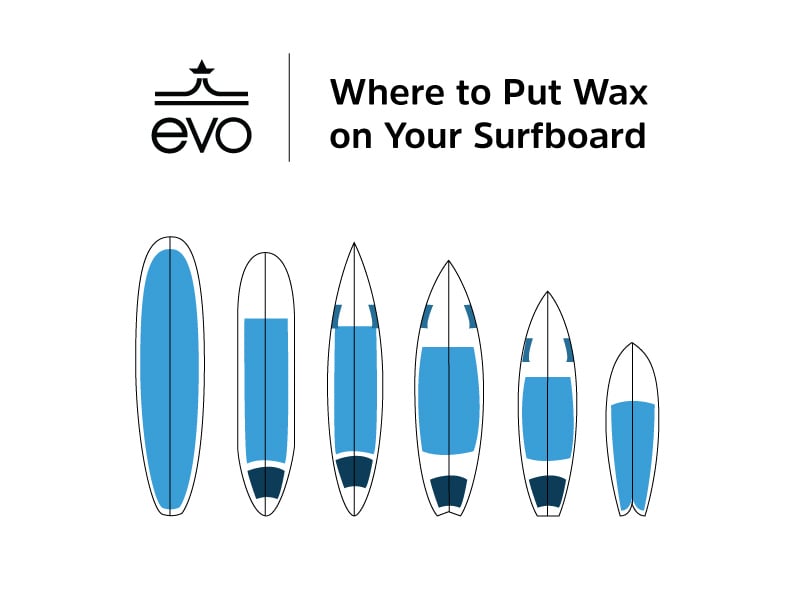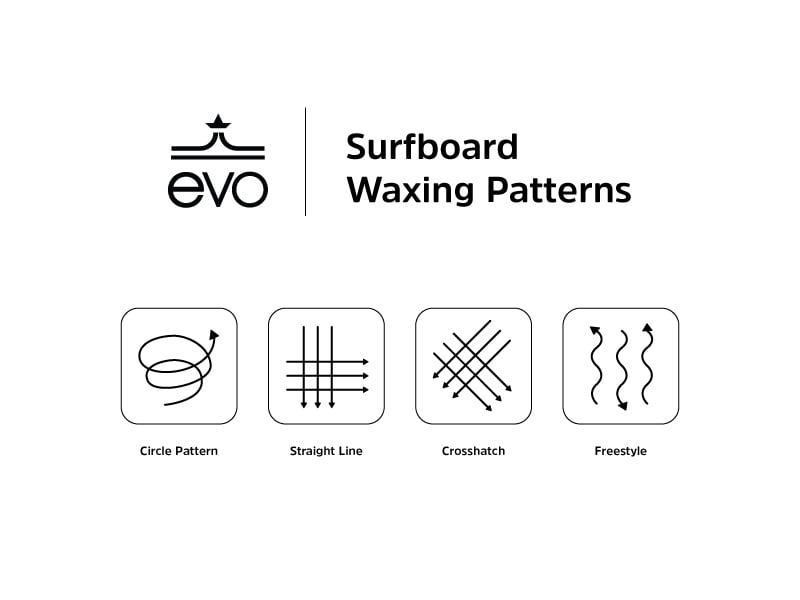How to Wax A Surfboard & How to Remove Surf Wax
So you’ve just bought your first, shiny new epoxy or fiberglass board and are ready to drop in & smack the lip ilke “whaaapahh” huh? But before you get so pitted, you’re going to have to make sure your feet don’t slip off the deck and ruin the wave of the day. That means waxing your surfboard. A little bit of art, a little bit of science, this simple process will help you focus on catching waves, not slipping and wiping out. We’ll cover everything you need to know about waxing your surfboard, from setting up a brand new board, to removing old surfboard wax and keeping it fresh.
Why Wax Your Surfboard?
Waxing your surfboard serves one simple purpose, it keeps you from slipping. The wax you apply to the top of your board makes it grippy, letting you stand with confidence and giving you the ability to dig in a drive the board. Surfboard wax will also keep you on your board when you’re paddling out. In short, it transforms your slippery board into a grippy platform.
What You Need to Wax a Surfboard
- Base Wax
- Temperature Specific Wax
- A Wax Comb
To Remove Old Surf Wax, You’ll Need
- A Sunny Day, Heat Lamp or Hair Dryer
- Flour, or a Wax Remover
- Paper Towels or Shop Rags
How to Remove Old Wax From a Surfboard
- Set board in the sun for about 15 minutes, or carefully apply heat with a heat gun or hairdryer.
- Scrape wax off with wax comb.
- If wax remain, use flour or a wax remover to loosen excess wax.
If you’re prepping a brand new board, you can skip this step. Otherwise, start off by getting the deck of the board warmed up so the wax can easily be removed. 10-15 minutes in direct sunlight should do it. If you’re in Michigan growing icicles on your beard while surfing, a hair drier or heat lamp should do the trick, but make sure it’s on a lower setting and pay attention so you don’t end up with grill marks on your board. Alternatively, you can use hot water. Once the old wax has softened up, you can scrape off the majority of it with your wax comb.
You’ll still have some wax stuck on there like a clingy ex, but that’s where the flour or pickle wax remover comes in. Sprinkle the flour onto the softened wax and rub off the rest with a paper towel, or put the pickle wax remover to use, rubbing on with a fair amount of pressure. Think polishing the hood of your ‘77 Mustang, not kneading sourdough. You can use a degreaser if you want to get it 100% fresh, but sometimes that can leave a residue which can make getting wax to stick difficult later.
How to Apply Surfboard Wax
- Remove old wax.
- Apply base wax to all areas where your feet or hands will be.
- Wax until small beads of wax develop, rather than smears.
- Apply temperature-specific wax on top of base wax.
So now that you’re so fresh and so clean, we can get to the building of those “sticky bumps.” Start with your base wax and begin rubbing it on lightly. Surf base wax is a less-grippy wax that allows for better adhesion of your temp specific wax to the board. Think of petting a wiggling 6 month old puppy - firm, but not aggressive. Make sure you’re covering the board where your feet are most likely to spend their time. This will depend on your board and riding style. Are you planning on walking up and down your board and hanging your toes off the nose? Then wax the nose. It’s surfing, not rocket surgery.

Pay special attention to where your hands will be while popping up and/or where you grip the rails for duck diving, especially if you frequently surf with gloves on.
Some folks have a chevron pattern they like to rub in, others prefer small circles, it doesn’t REALLY matter so long as there’s a consistent and even application of the base wax. Get creative if you want. You’re looking for little beads of wax to build up, not smear.
Once you’ve got your beautiful sticky bumps applied, now it’s time to apply your temperature specific surf wax. Check your local surf forecasting site to see what the water temperature at your favorite wave is like. Similar to the base wax, rub it on gently but consistently, trying to build up some nice, sticky bumps.

To get your temp-specific wax dialed, use our guide to choose the right surf wax. Another way to tell what temperature of surf wax to use is based on what you’re wearing in the water. Cold = 5/4 or 4/3. Cool = 3/2. Warm: Spring suit, Tropical = boardies/bikini/speedo.
Surf Wax Temperature Chart
| Water Temperature | Below 60°F / 15°C | 58°F - 68°F / 14°C - 19°C | 64°F - 74°F / 19°C - 28°C | Above 75°F/24°C |
| Wax Temperature | Cold Wax | Cool Wax | Warm Wax | Tropical Wax |
How Often to Wax Your Surfboard & How to Keep Wax Fresh
After a session, it’s a good idea to run the serrated side of your wax comb across your deck to maintain the texture of your wax. If you’re dropping the ball, not surfing, and your board has been in storage for a while, the wax can develop some oxidation that will make it less sticky. Running the comb across it in this situation can also expose some fresh wax and bring things back to life and hopefully realign your priorities.
How often you wax your surfboard is mostly up to the temperature of the water you’re surfing in. The warmer the water, the more will melt and wear off the board while you’re using it. Expect to clean and re-wax your board quarterly as build-up of old, non-sticky wax can prevent new wax from sticking. Changes in water temperatures and the changing of your temp specific wax is a good indication you should freshen things up. Also, if you’ve ground sand into the wax, it can be a good idea to clean that up before you look like you mistook a cheese grater for a slip & slide.
Surf Wax vs Traction Pad
There are other means to make sure you don’t slip off your board and go viral on Instagram. Most shortboards recommend using a traction pad on the rear of the board. While they can be a bit of a pain to put on initially, they effectively last for the life of the board and give some arch/ramp for laying out turns. To make it easier, we have a guide to help you install your surfboard traction pad. Even on shortboards, you’d wax up the middle of your board for your front foot, but recently front foot traction pads are making their way into the market so you can do away with wax altogether. This is mostly personal preference when it comes to mid length boards and fishes, but ridiculous on a longboard (where are you going to get a 10’ traction pad anyways?)
Should I Wax My Foam Top Surfboard?
In short, yes. Our buddies over at Catch Surf even make a specific soft-top wax. In long, it depends. Some soft top surfboards have pretty grippy surfaces when they’re fresh and new, others not so much. The process of waxing a foam top surfboard isn’t much different other than the base-wax step of the process is optional and you only need a thin layer to add some grip.
The foam tops by virtue of being squishy provide a decent amount of grip, so it’s not always necessary to wax them. Soft boards also tend to be designed for beginner surfers to be ridden in smaller waves where you simply don’t need a kung-fu grip on the board to be ridden appropriately. If you’re a special kind of crazy and dropping into jaws on your wavestorm, then yeah, go ahead and wax ‘er up good.